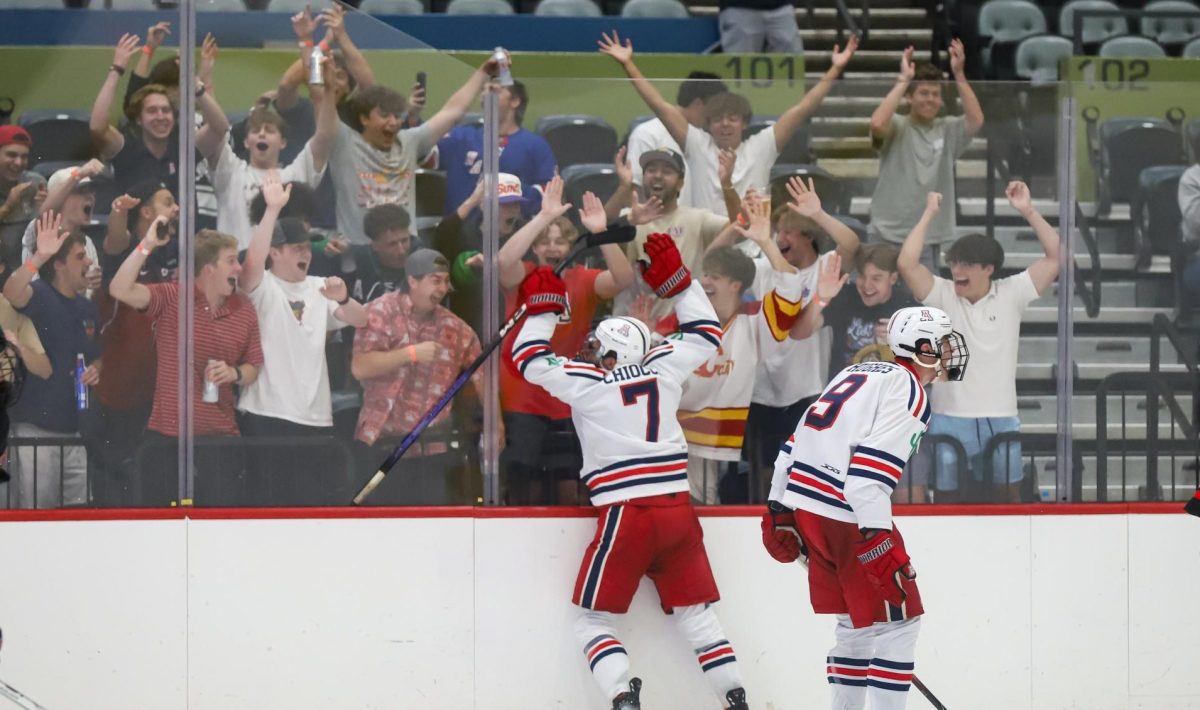The most dreaded “”what if”” scenario in all of football has struck the Arizona Wildcats: what if the star quarterback gets hurt?
It’s particularly pressing for the Wildcats because Nick Foles has been the unquestioned leader of the team and the most important player in Arizona’s second place finish in the Pacific 10 Conference last year and its quest for the Rose Bowl this year.
Each time Foles was hit in this season’s first five games drew that hold-your-breath and cross-your-fingers feeling in hopes he would hop up, unscathed. If we’re being honest, any Rose Bowl dreams Arizona has for this season diminish if Foles isn’t playing.
Foles had always gotten up no matter how devastating the tackle or how hard his head hit the ground, and each time he did, faith was restored. But then on a chilly day in dreary Pullman, Wash., while playing Washington State, Foles went down and stayed down, holding up his right leg and keeping it still as if he thought that if it moved it would only get worse. Meanwhile, everyone in Tucson held their breath.
Seeing him go down the way he did — a player rolling into his knee after he had planted and completed his throwing motion and then dropping to the ground immediately screaming in pain — evoked the memory of New England Patriot quarterback Tom Brady going down in a similar fashion in 2009. Brady was lost for the year and his return for the following season was also in question.
Fortunately for Foles, the situations are different.
For starters, when Foles returns from his injury it won’t be with a new hairdo because, unlike Brady, he already has long hair. More importantly, Foles’ return will also be much sooner than Brady’s. Head coach Mike Stoops said that Foles will likely be out two to three weeks and, as of now, there is no known damage to major knee ligaments.
But the reality is that Foles is going to be missing games and that raises questions.
Matt Scott will take his place at quarterback, and the junior does have some experience after starting the first three games in 2009. Scott can potentially add a new dimension to Arizona’s offense because he is an above-average runner, but Scott has shown over the last two years that he is limited as a passer.
Rather than try to fix Scott’s passing deficiencies, Arizona needs to go with what could work best right now because the Wildcats are too deep in the Pac-10 race to try and reinvent the wheel.
This means that Arizona needs to simplify its passing playbook to help accommodate Scott. Quicker timing routes should replace long-developing deep reads that Foles generally runs because, as was apparent against Washington State on Saturday, Scott struggles with progressions and his propensity to run at the first sign of trouble makes him an easy sack target.
Most importantly, though, Arizona needs to run the ball.
The key to continue winning while Foles is injured will be the play of the offensive line and the three-headed running back monster of Nic Grigsby, Keola Antolin and Greg Nwoko who, although immensely talented, just haven’t been very good this season.
Arizona ran the ball 47 times on Saturday, which is a lot, but no running back averaged over five yards per carry. This was nothing new, though, since the Wildcats entered the Washington State game ranked 8th in the Pac-10 and 92nd in the country in rushing.
Arizona’s defense will be good enough to keep the team hovering at the surface in games while Foles isn’t playing, but it’s really up to the offensive line and the running backs to keep the team afloat.
And they need to, because injuries aren’t taken into account by the Rose Bowl committee. Just wins and losses.















